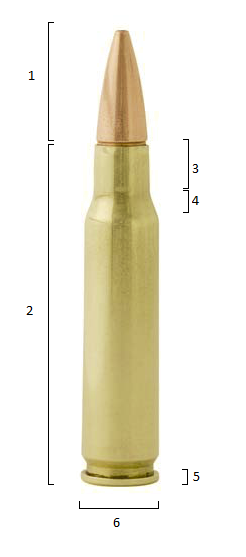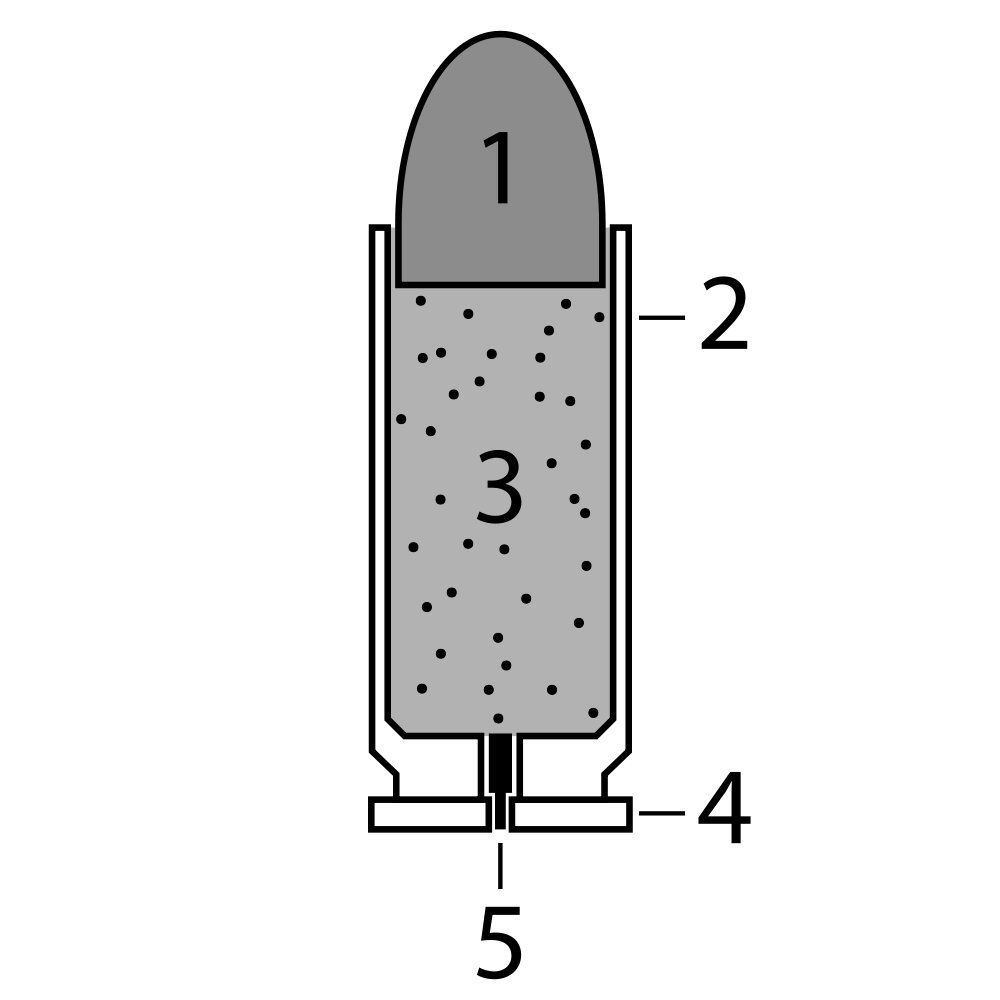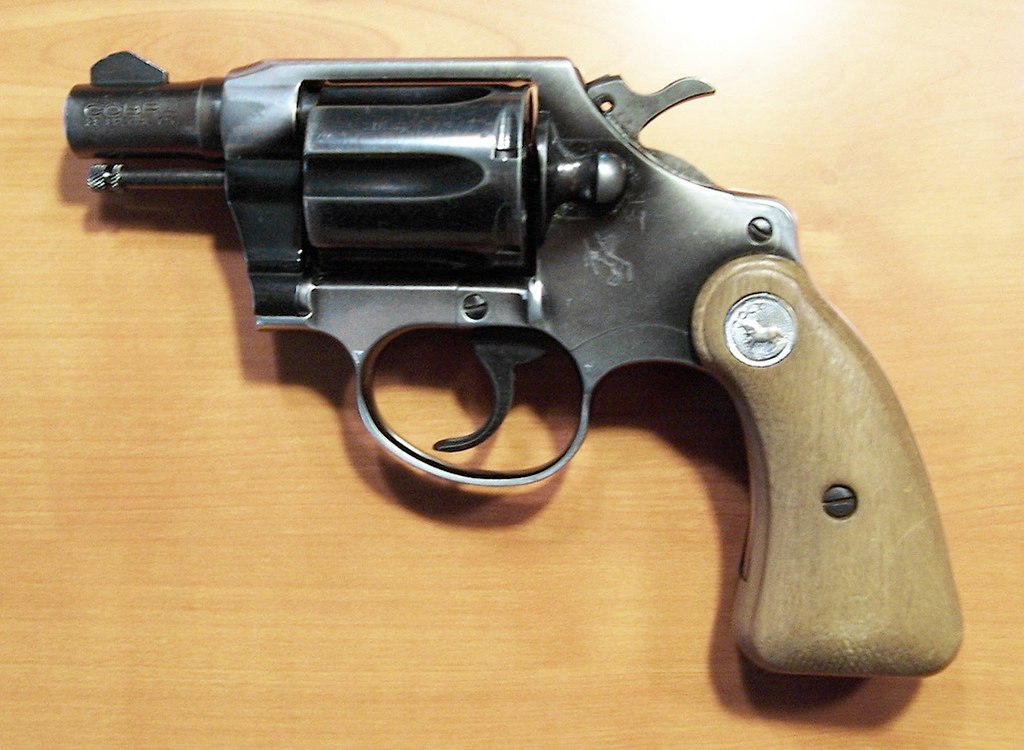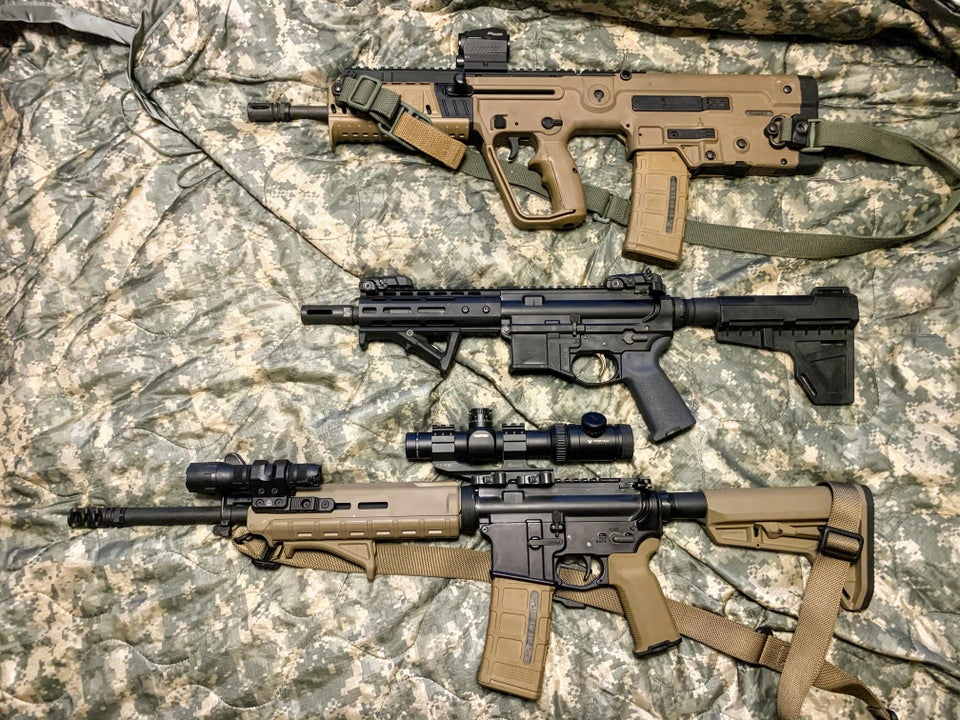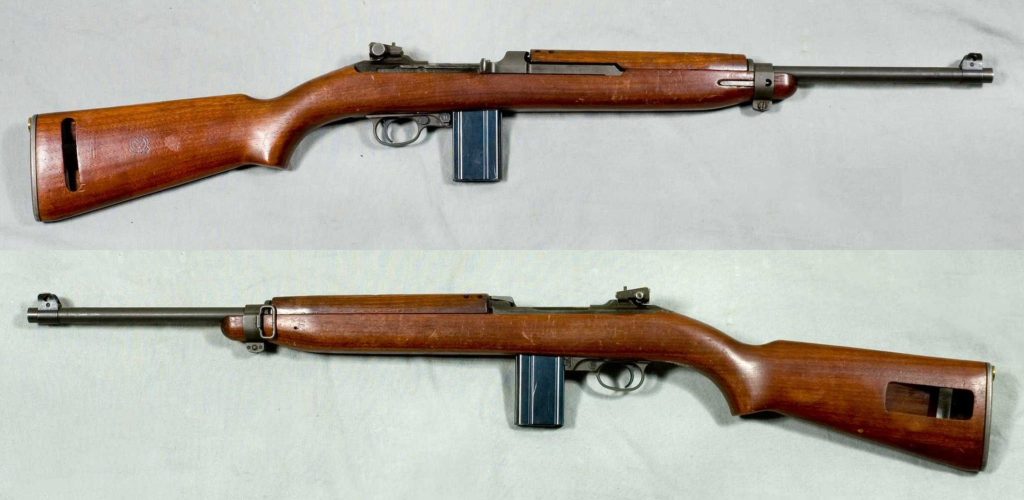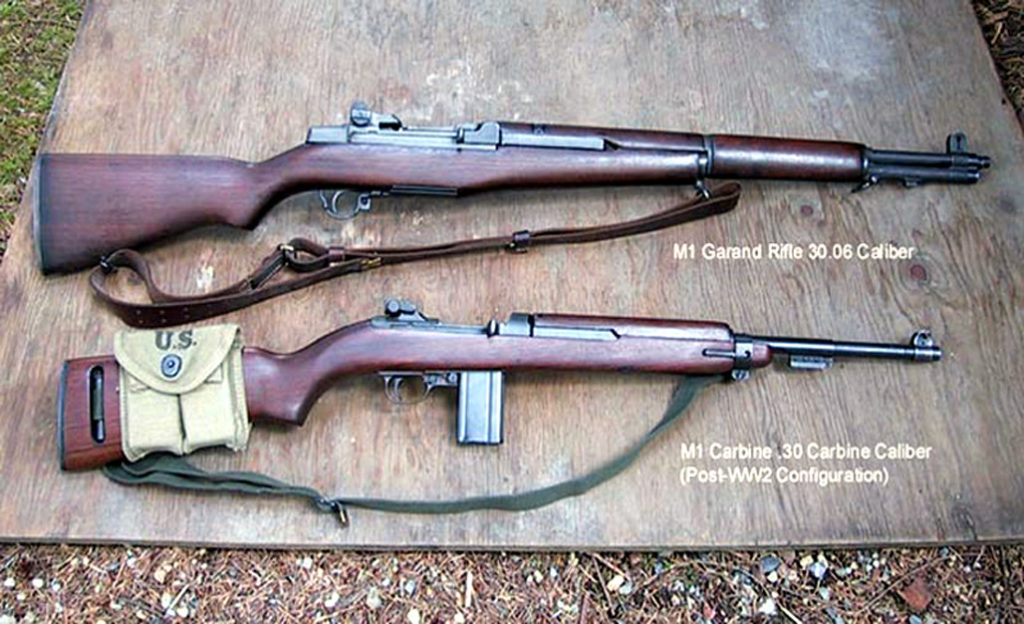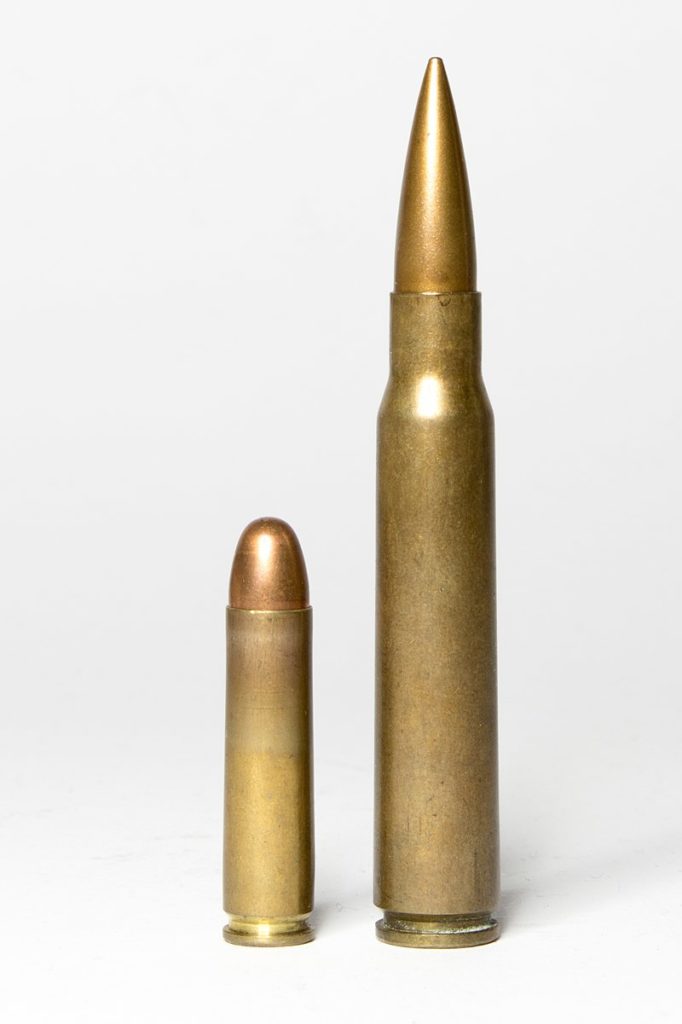In the last post we learned some basics about guns. In this post we begin a discussion of half of the gun equation: ammunition. There are a stunning number of options in the world of ammunition. Most ammunition is designed with a specific kind of performance and/or mission in mind. I can’t cover all ammunition. That’s just ridiculously broad and unnecessary. Who cares what ammunition Teddy Roosevelt carried on African Safari?
Our focus here should rightly be on ammunition best suited to the prepper. I will simply list some good alternatives, give what I think is the most important upshot to know about them and briefly list some guns that accept that ammunition. Later, we will talk about the guns.
Before proceeding we need to make two basic distinctions. First we need to distinguish between pistols and rifles. As I explained in my first post on guns, with the arrival of things like AR-15 pistols this is getting a little fuzzy for ordinary folks. When I say pistol for present purposes I mean the kind of weapon you could place in a traditional holster on your belt. You would not fire this gun from the shoulder. A rifle, by comparison, is a long gun that you would typically fire from the shoulder. One thing pistols and rifles generally have in common is that their barrels are rifled. Here is an example of rifling looking down the barrel:
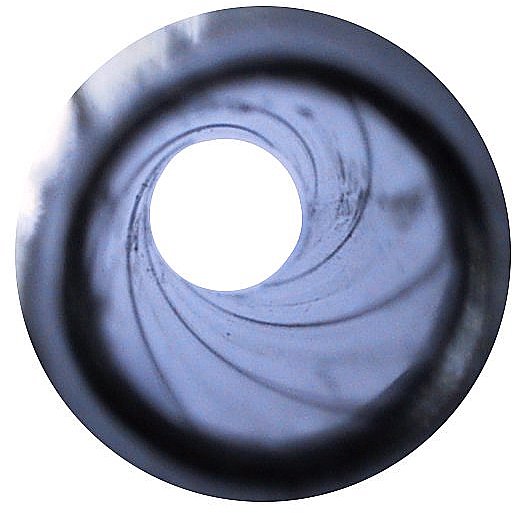
The rifling is what creates the smooth swirlling or twisting pattern you see as you look down the barrel (the little splotches you see here and there are burnt carbon and other fouling from shooting: this barrel needs to be cleaned). What rifling does is cause a bullet to develop a spin as it moves down the barrel. A spinning object often follows a more stable and predictable pattern when in motion. This is the reason some wicked pitches in baseball involve putting a little spin on the ball, why spin is a part of “Bending Like Beckham”, etc. The classic modern bullet shape would actually quickly start to tumble without spin, leading to a completely unpredictable trajectory.
The other major category of firearm is a shotgun. Traditionally, a shotgun was a long gun that fires shot, which usually means multiple projectiles per cartridge fired. Below is a classic “shotgun” cartridge:
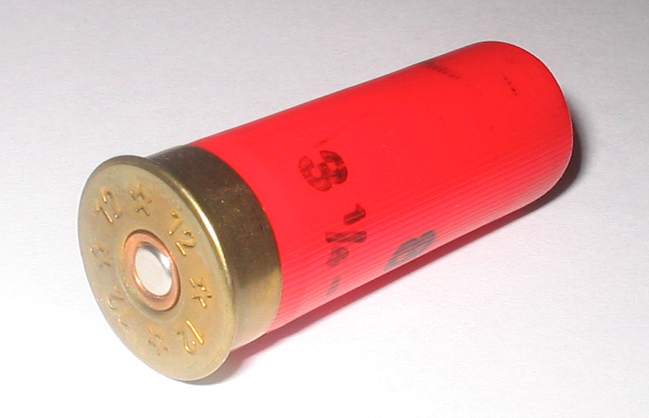
The pellets or “shot” that shotguns typically fire looks like this:
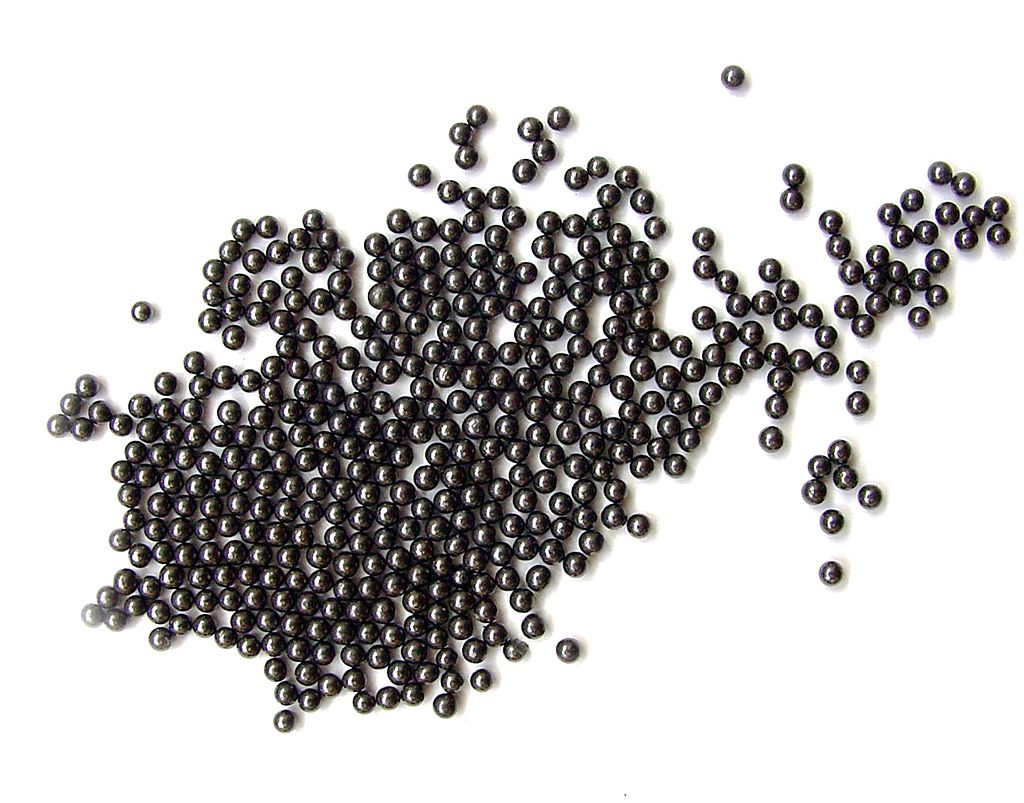
To get a better handle on this, here is an image of a shotgun cartridge with a partially translucent casing:
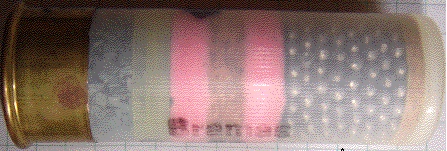
The base is brass and contains the primer and some powder, but the powder is also seen in the dark substance extending beyond the brass base into the translucent section. What follows (the light greenish, pink, brownish and pink rings) is the wad. Traditionally, the wad was used just to create a rough seal against the barrel so that more energy from the gas expansion of the powder would be harnessed, leading to shot leaving the barrel at higher speeds. These days the wad often provides a “flight control” feature that make the shotgun more accurate at distances; this is particularly true of rounds designed for birds like ducks and turkeys. Finally, we have the pellets, or “shot” as we often call them.
One other type of shotgun cartridge that is getting increasingly popular is the “rifled slug”. These fire a solid (and huge) bullet with rifling on the bullet (as opposed to the barrel in a rifle) thus generating spin and therefore some flight stability. Here is an example of one (not the diagonal “rifling” on the bullet at the right):
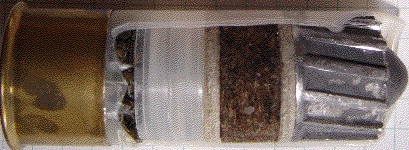
Shotguns and shotgun shell size and power are a fairly complex affair. Shotguns generally are sized in “gauges” which tells you about the interior diameter of the barrel. The most popular gauges are 12, 16 and 20, and there is also a .410 gauge (although techically this is a caliber). As gauge increases the barrel narrows. Thus, all other things being equal a 12 gauge delivers a bigger punch than, say, a 16 gauge.
A shotgun shell must have the same gauge as the shotgun you intend to shoot it out of. Beyond that, the defining features of a shotgun shell is whether it fires shot or a slug, the shot size if it does fire shot and the cartridge length (typically, 2 3/4″, 3″ and 3 1/2″). There are many shot sizes but shot largely falls into two categories: “buck shot” (bigger pellets) and “bird shot” (smaller pellets). Widely commercially available buckshot comes numbered sizes, beginning with 00 (often confusingly referred to a “double O” or sometimes “double aught”) running up to 4. The lower the size the bigger the shot; 00 is the largest widely available buckshot. A smaller class of pellet is bird shot which runs from number 1 to 10 (with again, diameter decreasing as the number increases). Longer cartridge lengths are typically associated with more power, though you must insure that you shotgun can accomodate a given cartridge length (and refer to the shotgun manufacturer’s manual for guidance; from a safety standpoint the issue is not simply whether it will technically fit).
For prepping I recommend relying on the 12 gauge round. It is a big, powerful and versatile round. I usually carry 00 buckshot and various birdshot. For the latter I run number 3 or 4 shot for duck and 7 or 9 for turkey. The purpose of the buckshot is mainly self defense while the purpose of the birdshot is potential food (ie hunting). For turkey I like Federal TSS rounds (number 7 or 9 shot). These are very expensive but their high yield per shot makes them more cost effective. For duck I typically use Federal Black Cloud. In all cases I try to use 3 inch or 3 1/2 inch cartridges.
Good choices for defensive shotguns are pumps (my favorite is the Mossberg 590a1 for home defense and the Mossberg Shockwave for mobile defense) and semi-autos (I can recommend the Benelli M4 or M2, the Mossberg 930 or the FN SLP). For a bird gun I use the Benelli Super Vinci but there are any number of good pump action bird guns. Now these hunting cartridge choices are driven by the hunting opportunities where I live and you should research the game choices in your area, talk to local hunters if you don’t already hunt (you should hunt) and tailor your cartridges accordingly.
On to pistols. Here there are a ton of cartridges but only two I would probably recommend: 9mm (or 9mm Luger) and 45 ACP (ACP=Automatic Colt Pistol). Here is a pic comparing the two to some other pistol rounds:
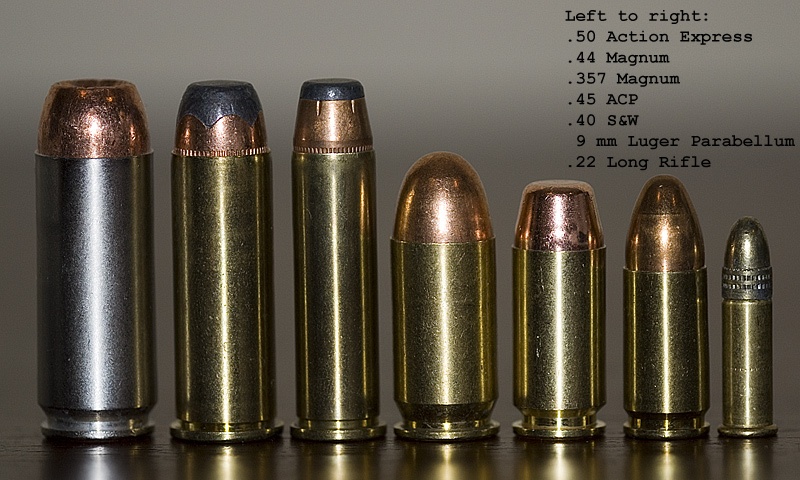
I can (and people have) gone on forever about these two cartridges so let me say a few big things about them. They are both widely available and can usually be had for competitive prices. The big knock on the 9mm was that is lacked hitting power, but these days there are a lot of loads for this cartridge engineered to have a lot of stopping power. No one has ever complained about the stopping power of the 45ACP. It is a hammer of a cartridge. The complaint instead has been about its size (which limits magazine capacity for a given magazine size) but there is a lot of skepticism about pistols in high round count gun fights. For either of these I would get a solid but basic pistol like a Glock. In a collapse situation a pistol is basically a bridging tool as you get to your rifle.
There are a some rifles that take “pistol” rounds. For instance, a friend of mine bought a Kel Tec Sub 2000 (pictured below) in 9mm. It shot without issue. It is light, seems reliable (we had no issues in a couple hundred rounds), accurate enough and is very collapsible, which might make it an attractive option if you were forced to bug out.
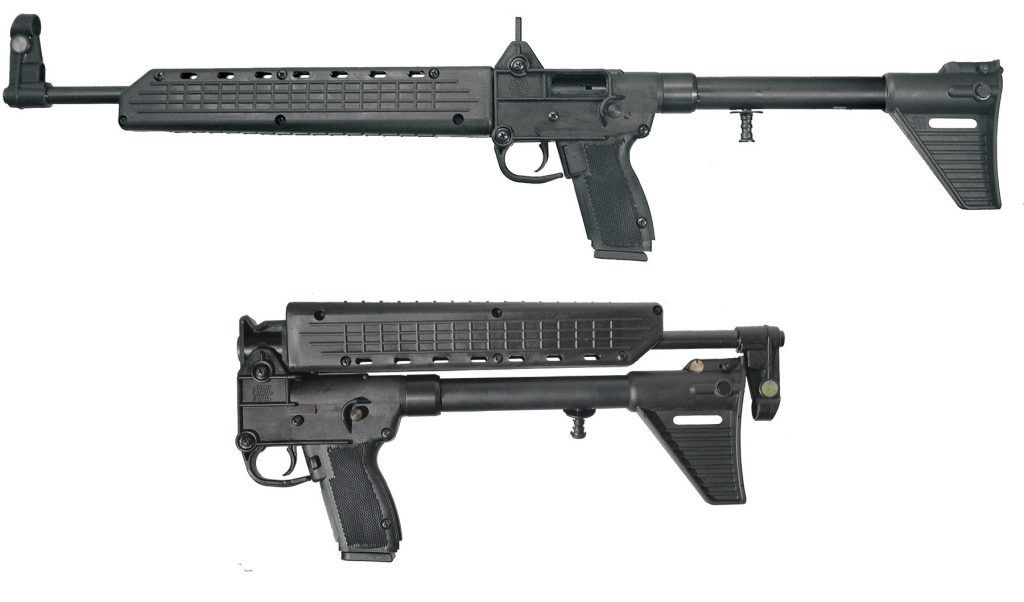
Moving on to rifle rounds, let me list some important ones for prepping. This is my list. If you have thoughts please throw a log on the fire in the comments. Here is a picture to start the discussion:
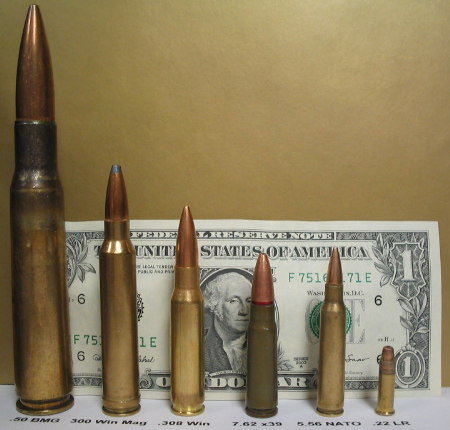
.22 LR (22 long rifle)-This is a small cartridge. This limits its power and range. However, it is light (the combat load a mid-sized man could carry with it is considerable), very accurate within a modest range (say 25-50 yards for small game like squirrels) and out to maybe 150 yards for defense (maybe farther but I admit I have only really shot it this far). I use this round mainly for small game and training. As a training round it has the advantage of being cheap and wearing out barrels more slowly. I can recommend the Ruger 10/22 rifle for this. The 10/22 has a take down model that packs down small.
.223 Remington/5.56X45mm (5.56 NATO)-This is the famous M-16 round. The 5.56 NATO is the military version and the .223 Remington is the civilian variant. The 5.56 NATO tends to be more powerful than the .223, so typically if a rifle accepts the 5.56 you can run .223 in it but the reverse might not be true. The reason is that rifle chambers are rated to a certain amount of pressure from the gas expansion when the powder ignites, and 5.56 has a higher pressure rating. This is a small, very high velocity round. It is not unreasonable to call it a “.22LR on steroids”. It is cheap and light. Rifles chambered for these generally have manageable kick (recoil). The two knocks against it (at least compared with some cartridges we are about to discuss) are that it has limited effective range and maybe less stopping power. The latter can be mitigated by choosing a good loading. I would run these mainly for defensive purposes. I usually run 5.56X45mm in three flavors: XM193 (a 55 grain round with good soft target performance); M855 (these are sometimes called “green tips”, these are 62 grain and have somewhat better barrier penetrating qualities); and 77 grain open tip match (I particularly favor 77 grain “Sierra Match King” 5.56X45 cartridges). 77 grain Sierra Match King (SMK) rounds are sometimes sarcastically called (if you forgive my language) “Operator as Fuck” because of their popularity in the US military special forces teams. Yucks aside there is a reason for this: the 77 grain SMK round is a hard hitting round battle-proven to neutralize threats, and quickly. Three guns I would recommend for these cartridges might include the AR-15, Tavor/X-95 and SCAR-16.
7.62X39mm (7.62 Soviet)– This is the round chambered by the world famous AK-47 rifle. Another very good rifle that chambers it is the SKS rifle. This is basically a 30 caliber (.30 cal) cartridge, so it is big. But it has a low drag coefficient (i.e. high drag). It is best out to maybe 300 meters and in that range it is a very hard hitting round. It is not a long distance round. 7.62 rounds are also fairly cheap. I don’t have a particularly strong opinion about versions of the round. If find nearly all of them get the job done. I would use this primarily as a defensive round but it is a good choice for medium sized game (like deer) out to maybe 200 yards or perhaps a bit more.
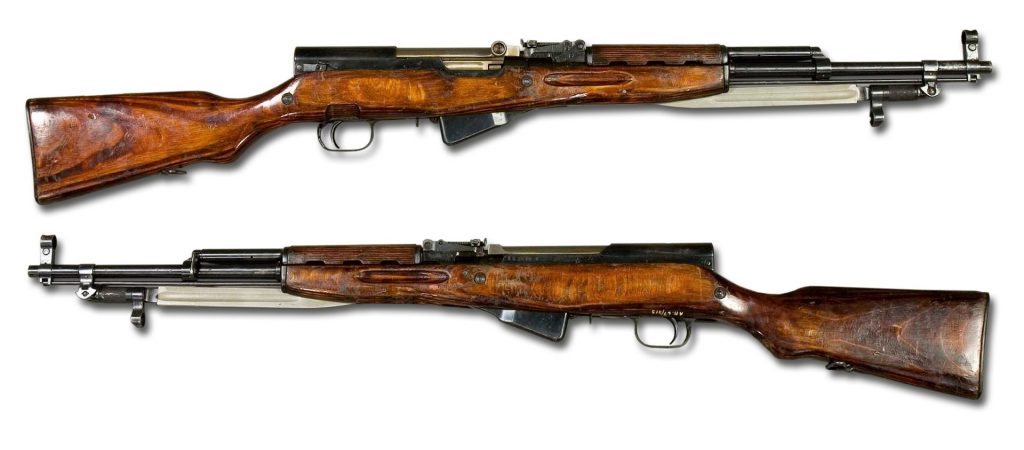
.308 Winchester (“Three Oh Eight Winchester”, the “.308 Win” in the image of rifle cartridges above)/7.62X51mm (7.62 NATO)-The .308 Winchester round is the civilian version of the military 7.62X51mm cartridge. In this case the civilian round, the .308 Winchester, is generally the more powerful than its military counterpart. This is a big, heavy hitting 30 caliber cartridge with good long distance performance, good barrier penetration, hard hitting. Its downsides are probably its weight and kick (which exceeds that of all of the cartridges we have discussed so far). It is in a class of cartrdiges that all have roughly similar performance. Some of these include the .303 British (a standard service cartridge for the British military and associated colonial forces from the late 19th century to the post WWII period), .30-06 (“Thirty Aught Six”, a common US military cartridge of the first half of the 20th century), the 8mm Mauser (played a role in the German military similar to that of the .303 British in the U.K. sphere). The difference is that there are generally a far wider range of firearms in your local gun store that chamber the .308 Winchester/7.62X51mm and the cartridge itself is widely commercially available. This is a great round for self-defense, particularly at longer ranges. Because of its power, you need to be aware of its wall penetrating capabilities. This is also true of the .223 Remington/5.56X45 and 7.62 Soviet cartridges, but in the case of the .308/7.62X51 you have to be mindful of this out to much longer ranges. To put it in perspective, this round hits harder at a thousand yards than really powerful pistol cartridges, like the .357 Magnum, do at point blank range. This is also a superb hunting round, particularly for medium sized game. In my corner of the American south it is popular for deer and hogs. 7.62X51 is more associated with defensive use and most run roughly 147 grain “M80 ball”, which is basically a pretty standard military round. For hunting .308 Winchester, usually around 168 grains, is popular. Popular rifles for this cartridge include a wide array of bolt action hunting guns, the AR-10, FN FAL, FN-SCAR, etc.
So this has been a brief, whirlwind tour that captures a few of the essential points about some cartridges I think might be most useful for prepping. I didn’t talk about all the intricacies of these cartridges. This was more like a bullet point introduction that captures the larger points about these common cartridges.
A key thing to remember is that some of the choices, especially hunting rounds, reflect the nature of where I live. I live in a woodsy area of the South where truly long range hunting shots are not that common. If you live somewhere like the open country of the U.S. West, you might want to choose a cartridge with slightly better long distance performance like the 6.5 Creedmoor or 7mm Remington Magnum. We also have no really big game, like Moose for instance (for which you might want to consider something like perhaps 300 Winchester Magnum). I didn’t write about these because I lack enough experience with them (though I have shot them all) to speak with confidence.
I also did not focus much on cartridges for level-action guns. That simply reflects my lack of experience with them. I have grown increasingly interested in these in the last year or so (maybe it was Chris Pratt’s Marlin Model 1895SBL in Jurassic World) and plan to evaluate them over the next couple of years.

Finally, these aren’t the only choices for prepping even in my neck of the world and are not the only cartridges I’ll mention in years to come. For instance, the aforementioned 8mm Mauser cartridge is used by the Zastava M48, which in my opinion currently represents a great deal on a high quality clone of the storied K-98 Mauser rifle (K98s are great too, but are crazy expensive compared with M48s).


